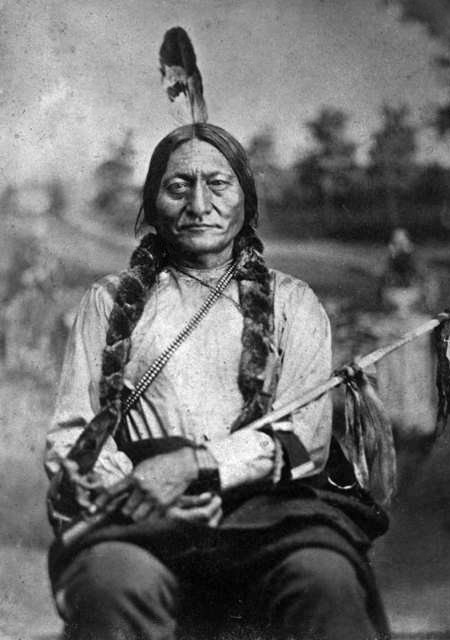Last updated: August 29, 2020
Article
The Power of the Pipe

Public Domain/D.F. Barry
Black Elk, the Oglala Lakota healer and visionary, identified seven separate rites for his people involving the pipe. In these rites, the pipe plays a role in important ceremonies as well as navigating profound life events, such as the keeping of a loved one's soul, making relatives, and rites of passage. However, the pipe's power was not confined to established ritual, but could manifest in spontaneous moments as well. One story that illustrates this is from the life of the famous Hunkpapa Lakota leader, Sitting Bull.
As historian Nathaniel Philbrick relates the story, Sitting Bull had become responsible for an extended family that had grown rather large. As a result, his mother requested that he restrain himself in battle and not be as aggressive so as to prevent major injury or death. He did as she asked, but his hard-earned reputation as a fierce warrior suffered when the other men noticed his hesitation on the battlefield.
Then in 1872, the Lakota warriors attempted to block construction of the railroad near the Yellowstone River. The U.S. Army was there to provide protection for the railroad and a battle ensued. As the battle turned into a standoff, the Oglala Lakota warrior Crazy Horse displayed his bravery by riding in front of the soldiers armed only with a spear. Then Sitting Bull stepped forward. He put his rifle on the ground and walked towards the line of soldiers with his pipe.
The soldiers began firing. With bullets kicking up the dirt around him, Sitting Bull sat down and shouted back to his fellow warriors, "Whoever wishes to smoke with me, come." Only four men, including Sitting Bull's nephew White Bull, sat with him as bullets buzzed past their heads and hit the ground at their feet and legs. The four men anxiously smoked as fast as they could, but noted that Sitting Bull "just sat and looked around and smoked peacefully."
After smoking the pipe, Sitting Bull calmly picked up a stick and cleaned out the pipe bowl before standing up. He then turned, and at a leisurely pace, walked back towards home as the bullets hit the dirt behind him. The Lakota warriors were in awe that not one bullet struck him during the entire episode and he had shown no fear. As White Bull later recalled, this was the "most brave deed possible" and "counted more than counting coup."
Smoking the pipe in the midst of battle restored Sitting Bull's reputation among the other warriors. The appearance of smoking the pipe was a peaceful one, but in the context of battle, it required courage, confidence, and defiance. The oversimplification of the sacred pipe as simply a 'peace pipe' misses the many roles and contexts in which it has supported the lives of countless Native Americans for centuries.
The Sacred Pipe: Black Elk's Account of the Seven Rites of the Oglala Sioux. Recorded and edited by Joseph Epes Brown. Norman, OK: University of Oklahoma Press, 1953.
Philbrick, Nathaniel. The Last Stand: Custer, Sitting Bull, and the Battle of the Little Big Horn. New York: Viking, 2010..
